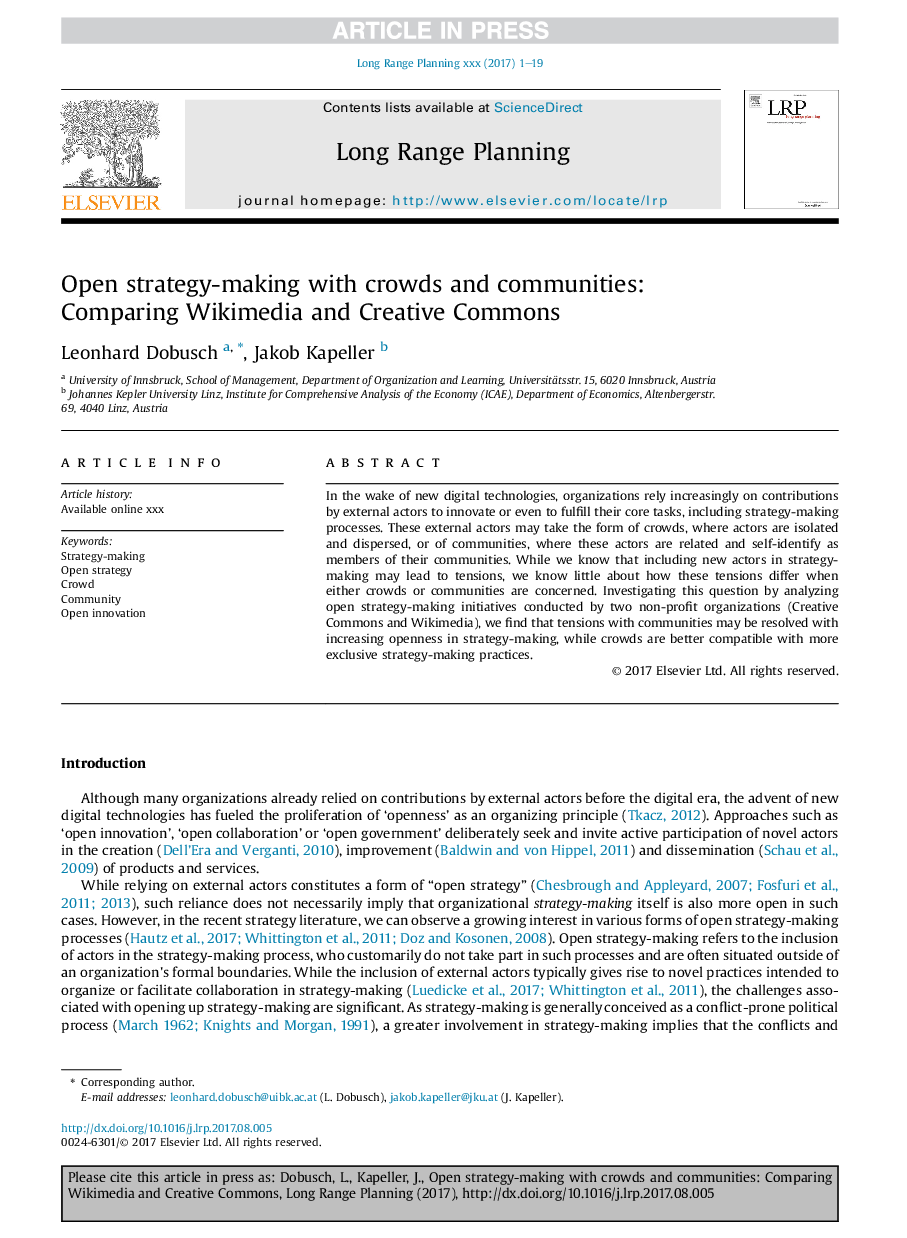| Article ID | Journal | Published Year | Pages | File Type |
|---|---|---|---|---|
| 10154031 | Long Range Planning | 2018 | 19 Pages |
Abstract
In the wake of new digital technologies, organizations rely increasingly on contributions by external actors to innovate or even to fulfill their core tasks, including strategy-making processes. These external actors may take the form of crowds, where actors are isolated and dispersed, or of communities, where these actors are related and self-identify as members of their communities. While we know that including new actors in strategy-making may lead to tensions, we know little about how these tensions differ when either crowds or communities are concerned. Investigating this question by analyzing open strategy-making initiatives conducted by two non-profit organizations (Creative Commons and Wikimedia), we find that tensions with communities may be resolved with increasing openness in strategy-making, while crowds are better compatible with more exclusive strategy-making practices.
Related Topics
Social Sciences and Humanities
Business, Management and Accounting
Business and International Management
Authors
Leonhard Dobusch, Jakob Kapeller,
